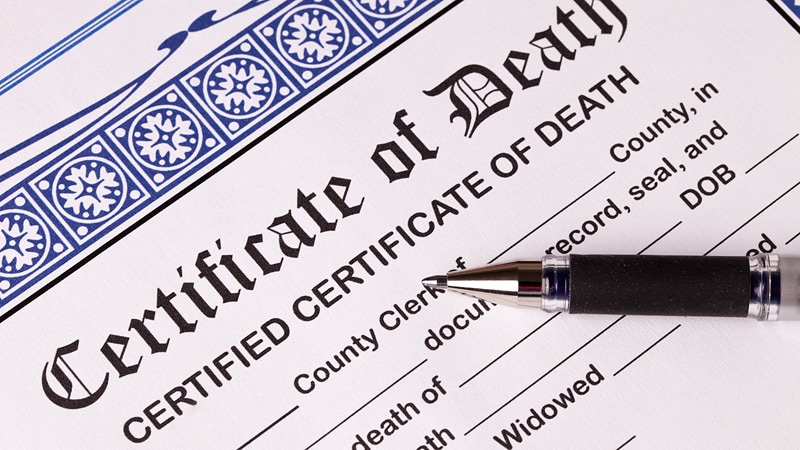Death Certificates: Do We Always Know 'Cause of Death'?

I received a call to sign a death certificate for a 75-year-old woman who had died unexpectedly during the night. A long-time patient of mine, she had diabetes and hypertension which had been well controlled, and she had been doing well. I agreed to sign her death certificate because there was no suspicion of foul play and the death seemed natural. The family had no desire to have an autopsy done.
Death certificates are an important source of data on disease incidence, prevalence, and mortality. These data are used by the federal government, researchers, and funding sources, to name a few, to help focus health promotion and disease prevention efforts. But how accurate are they?
In the case of my patient, what was the actual cause of death? Was it a heart attack, stroke, aneurysm, occult malignancy, or something else? On the basis of the patient's history and the silent death at home, I listed heart attack secondary to diabetes and hypertension on her death certificate. We will never know for sure, but the death certificate's cause of death will be used as part of those vital statistics that are relied upon to shape healthcare policy and practice.
How accurate are death certificates? Research on this topic indicates that the error rate in death certificates ranges from 10% to 53%.[1,2] In these studies, the most common errors are identified as "technical errors," usually in how the form is completed. But even if we complete the form technically perfect, do we really get an accurate record of the cause of death? My contention is not that we should be able to know the cause of death in every case or even most cases; we make our best, educated guess based on what we know. Most adults who die do not have an autopsy and do not need one. The reality is, the data source for death statistics—the death certificate—is not as accurate as it's perceived to be, by the public or by those who use the data.
When completing death certificates, as clinicians, we must remember that this is not just a document certifying death so that the person can be put to rest, but a piece of data—a vital statistic—that will be used to analyze population health. It is important to put effort into reviewing and researching the patient history, and talking with other consultants who may have provided care to the patient, so as to determine probable cause(s) of death as accurately as possible.
https://ift.tt/2Ofhkhs


Comments
Post a Comment